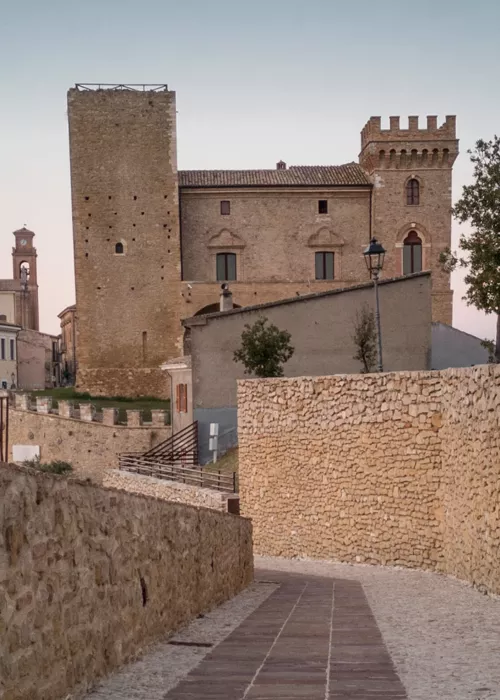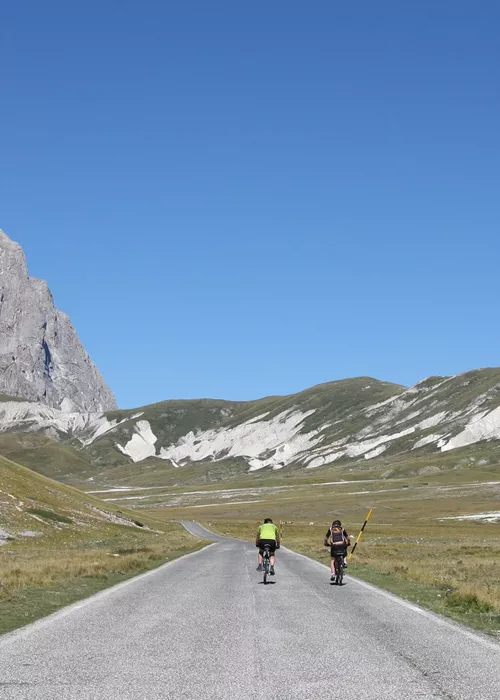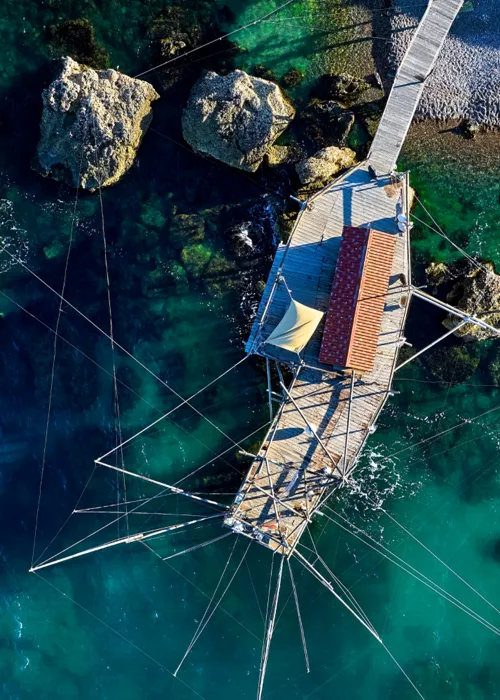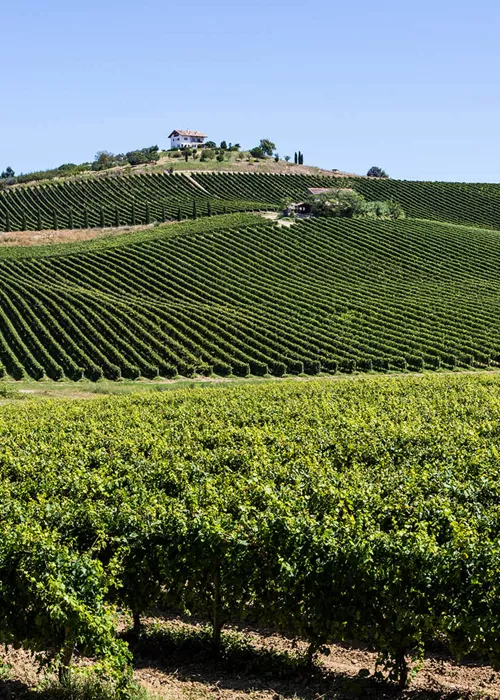Santo Stefano di Sessanio

Entering Santo Stefano di Sessanio immediately provides evidence of the tenacity of its inhabitants. The village was able to resist, reinventing itself, first during the depopulation that affected Abruzzo's hinterland in the 20th century, then during the earthquake that struck L'Aquila in 2009.
In 2021, the fourteenth-century tower, which stands among the stone houses, was finally removed from the rubble and returned to watch over the roofs and slopes cultivated around it; also known as the Medici Tower, the tower reminds us of the economic and architectural impact that the powerful Florentine family had on the village from the 1500s. Today, climbing to its summit, you can enjoy a beautiful panoramic view.
To learn more about the history of Santo Stefano di Sessanio, you must visit the Terre della Baronia Museum, which preserves the ancient memory of these territories of the Gran Sasso, linked to the pastoral tradition and the practice of transhumance. It's now time to listen to your sense of smell by following the scent of lentil soup, to be enjoyed with a slice of crusty bread. Cultivated for centuries on these lands, the lentils of Santo Stefano di Sessanio are one of the excellences of Abruzzo. They're definitely worth trying!
From Santo Stefano, you can easily reach the Campo Imperatore plateau and the evocative Lake Pietranzoni.
The Castle of Rocca Calascio

The Castle of Rocca Calascio is a symbolic place of the Abruzzo hinterland that tells us a thousand years of history. A perfect film set in the film "Ladyhawke " by Richard Donner (1985) who chose it as a refuge for the sorcerer Imperius, while in the film "The Name of the Rose" by Jean-Jacques Annaud (1986), the fortress is seen in the background of the scenes filmed in Campo Imperatore.
After crossing Calascio and its evocative village, you reach the famous fortress overlooking the surrounding valleys, perched on a ridge at 1460 metres. It is the highest fortification in Abruzzo and among the highest in Europe: an exceptional observation point from which to monitor the transhumance routes. In this magnificent fortress that ploughs through the clouds, one immediately feels like a soldier and a lookout guarding the shepherds who migrate by the thousands with their flocks.
Castelvecchio Calvisio

Not far from Calascio and its splendid fortress, Castelvecchio Calvisio also has a history linked to transhumance and the wool routes and still lets us breathe in the air that transports us back in time. Its castle, built in the 12th century, stood guard over the Valle del Tirino, the green heart of Abruzzo, which the town overlooks. Walking along the narrow cobbled streets of the village, you will lose yourself in the silence between the limestone houses, the doorways, and the small artisan shops. Along the walls, the space suddenly expands to accommodate the Church of San Giovanni Battista and its precious Renaissance doorway. Inside, wooden statues date back to the 16th and 17th centuries. A final tour through houses, arches and stone stairways and it's time to take the road to Capestrano, passing first through the town that gives its name to the Barony of Carapelle: Carapelle Calvisio.
Capestrano

Capestrano is a place dear and familiar to the people of Abruzzo since, in 1934, the monumental Warrior of Capestrano made of local limestone was discovered in the area and raised to symbolise the entire region. Dating back to the 6th century BC and belonging to the Italic people of the Vestini, it was found in a necropolis of the ancient Aufinum. Currently, the original Warrior is preserved in Chieti at the National Archaeological Museum of Abruzzo, but it is possible to enjoy a reproduction of it at Piccolomini Castle, located in the centre of the village. The Piccolomini family received the castle as a gift in 1463 and guarded it until 1579, when it passed into the hands of the Medici. Climbing the crenellated tower, you can enjoy a very pleasant viewpoint; from this height, it is easy to engage with your imagination and historical memory, envisioning Abruzzi shepherds crossing the valley with their flocks. Leaving the village, a visit to the church and convent of San Francesco is a must, while for those looking for an extraordinary experience, it is advisable to reach the nearby Capo d'Acqua Lake, where you can immerse yourself in the discovery of a submerged mill.
Castel del Monte

Dominating the Tirino valley, at 1345 metres above sea level, this pastoral village is overlooked by Mount Bolza (1904 m). Walking at a slow pace through the ancient core of the village (called Ricetto), you will notice medieval legacies interrupted from time to time by frescoes and mosaics by young artists. But the village is also home to a cheese that is heir to the pastoral tradition. This is Castel del Monte Canestrato, made from whole raw sheep's milk. Its crust takes its special shape from the baskets in which the curd is placed. Slow Food Presidium, to be enjoyed fresh or mature, this cheese is an unmissable gastronomic excellence of the L'Aquila side of the Gran Sasso. Castel del Monte, from which it takes its name, is the perfect place to taste it. After touching the limestone castles, breathing in the still air of the villages and letting your gaze wander over endless pastures, every bite will possess the special flavour of the most authentic Abruzzo.
From here, it is easy to reach the monument to Pastor Pupo Nunzio, a tribute to the men and women who have dedicated their lives to transhumance.













